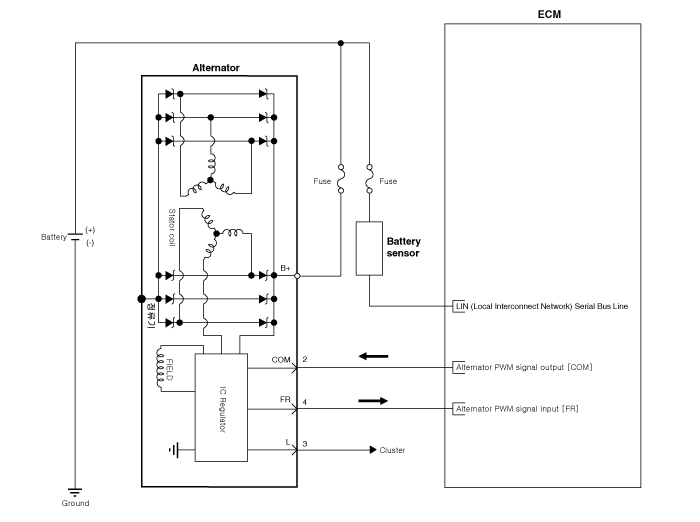Kia Cadenza: Charging System / Alternator Schematic Diagrams
Kia Cadenza YG 2016-2025 Service Manual / Engine Electrical System / Charging System / Alternator Schematic Diagrams
| Circuit Diagram |

|
 Alternator Specifications
Alternator Specifications
Specification
ItemSpecificationRated voltage13.5V , 150ASpeed in use1,500 ~ 18,000rpmVoltage regulatorIC Regulator built in typeDefault regulated voltage (V) [COM terminal]14.0 ~ 15.5 (-35°C)14. ...
 Alternator Repair procedures
Alternator Repair procedures
Removal
1.
Disconnect the battery negative terminal.
2.
Remove the engine cover.
3.
Disconnect the alternator connector (A) and cable (B) from the ''B'' terminal.
4.
To release the te ...
Other information:
Kia Cadenza YG 2016-2025 Owners Manual: Glove box
The glove box can be locked and unlocked with a master key (1). (if equipped) To open the glove box, pull the lever (2) and the glove box will automatically open. Close the glove box after use. WARNING - Glove Box To reduce the risk of injury in an accident or sudden stop, always ...
Kia Cadenza YG 2016-2025 Service Manual: Climate Control Air Filtar Repair procedures
Replacement 1. Disconnect the damper (B) from the glove box (A) and then remove the glove box lift (C). 2. Remove the filter cover (A) with pushing the knob. 3. Replace the air filter (B), install it after making sure of the direction of air filter. 4. Installation is the reverse ord ...
Copyright © www.kcadenzavg.com 2017-2025


